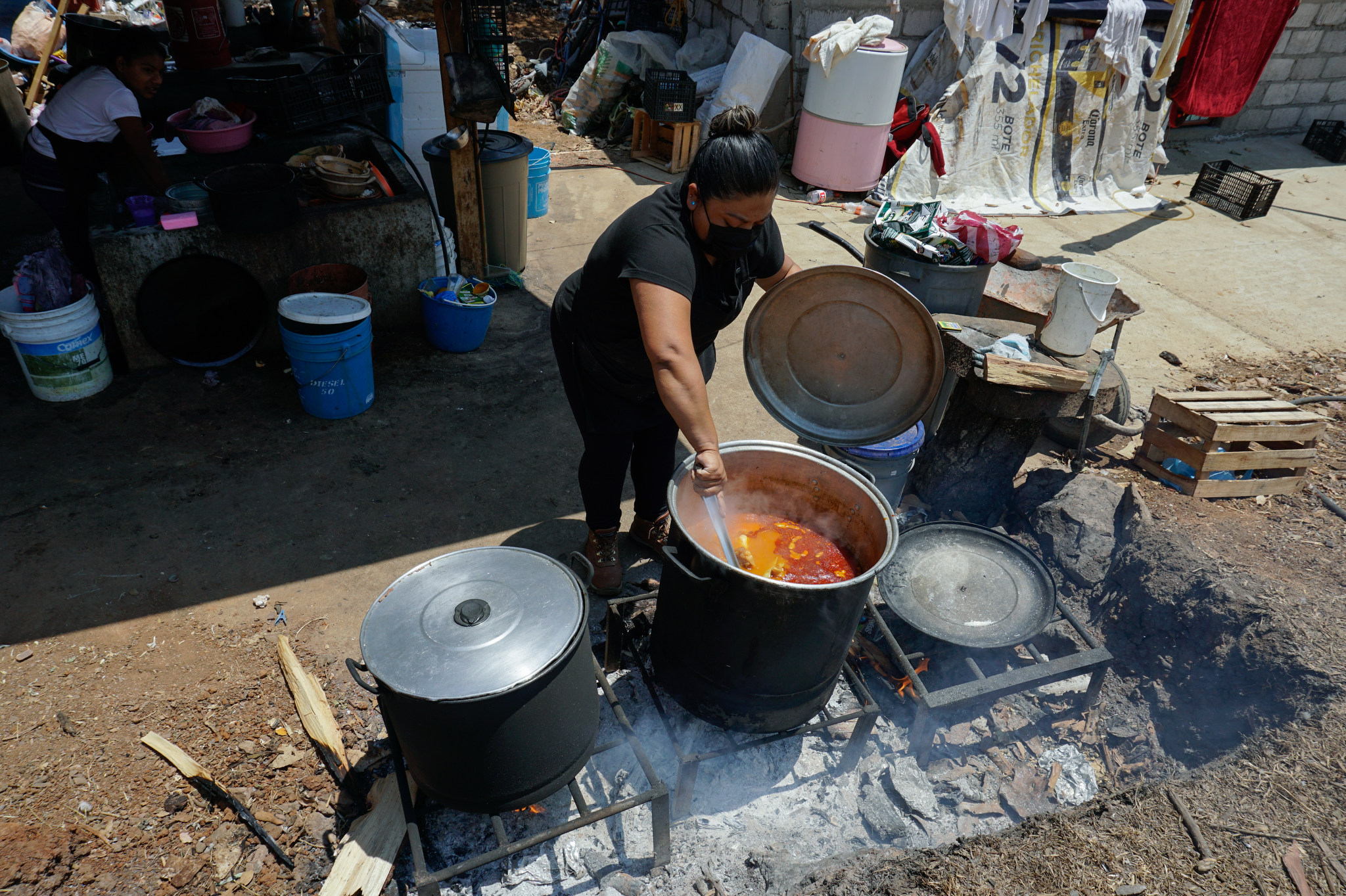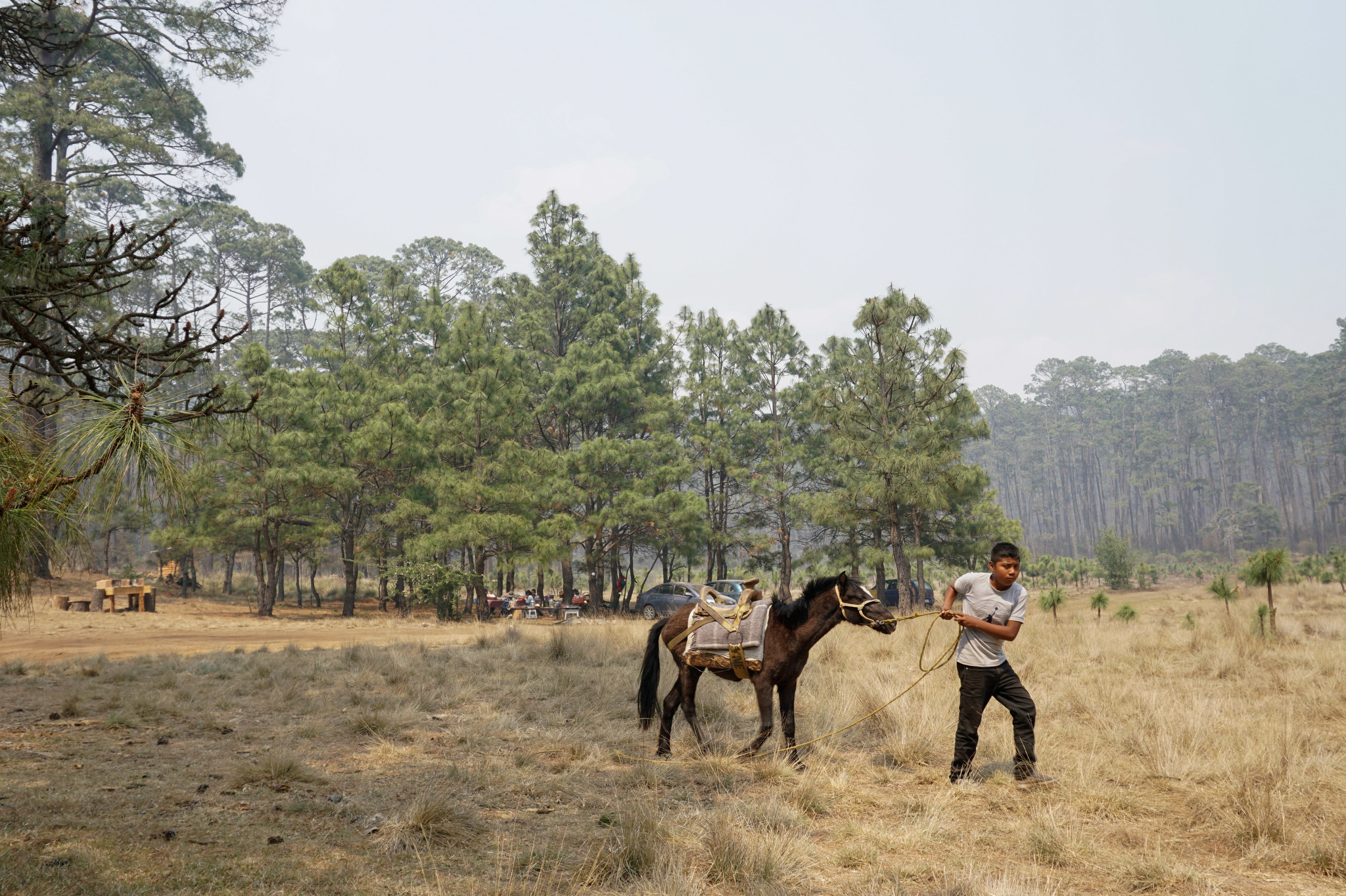
Avigaí Silva, GPJ Mexico
The mountain community of Llanos de Tepoxtepec recently decided to give up poppy farming and promote itself as an ecotourism destination.
LLANOS DE TEPOXTEPEC, MEXICO — Throughout Alejandro Solano González’s childhood, the fields in this mountain village awakened three times a year with red and pink poppies. Each blossom hid a seed pod plump with goo that farmers drained, bundled and sold. That gunk was opium gum, the basis for heroin.
Without it, this community of 163 people likely wouldn’t exist. “They label us as bad and violent, but we have to survive,” Solano says.
Solano, 41, says his family didn’t grow poppies. As a young man, he left Llanos de Tepoxtepec to become a civil engineer, but his wife and children remained. He wanted to stop commuting, but how could he make a living? The village is about an hour from Chilpancingo de los Bravo, the capital of the southern state of Guerrero. The route to town is dirt. Need to make a phone call? Good luck. But the forest – it’s breathtaking. Pines, cedars, oaks, crisp air. So the Solanos decided to lure desk-bound city dwellers with a restaurant and rental cabins.
For years, Mexico’s illicit-crop communities have struggled to picture a future without poppies. Much discussion has centered around whether the government should legalize opium for medicinal use or subsidize crop replacement. If the Solanos succeeded in drawing tourists, they could offer another road map: reimagining a village’s purpose.
Mexican poppies have fed United States heroin consumption since the 1940s, but production ramped up around the turn of the century. A major cause was the North American Free Trade Agreement. The trade pact flooded Mexico with cheap, U.S.-grown maize, according to a study in the Journal of Illicit Economies and Development, which is affiliated with the Global Initiative against Transnational Organized Crime, a civil society organization based in Geneva, Switzerland. Beans, pumpkins and peaches didn’t bring in enough money, particularly to raise large families. Poppies did.



At one point, Mexico produced more than 90% of the heroin consumed in the U.S.; Guerrero was arguably the epicenter. In 2017, the state was ranked Mexico’s second-most violent. Though villagers say Llanos de Tepoxtepec was spared, they couldn’t help but notice the armed opium buyers milling around town.
“As long as there is no economic investment in the communities … our governments will always continue to fight the issue of drug cultivation,” Solano says.
Solano heard about ecotourism, or marketing a location’s natural splendor, while working for municipal governments. He had no experience in restaurants or lodging, but he thought the village could offer a respite from city life. In 2018, as president of the local civil association, he won federal funding to build cabins and a restaurant, which serves Mexican staples such as pozole, a hominy stew.
At first, the Solanos only invited relatives and friends – the village’s reputation was too rough to attract many others. But word of its beauty spread. About halfway up the mountain, the air cools, the capital recedes, and the volcanoes Iztaccíhuatl and Popocatépetl swallow the skyline. Soon runners and cyclists were huffing through the forest.



Laura Alejandra Caballero de la Concha and her family recently spent a weekend in the village. “At the beginning, I was afraid to go up,” the 50-year-old says, “but being there and meeting the people, you realize that it is a very safe place because the people themselves provide that security.” Before her trip, friends had swooned over the village’s serenity. They did not lie, she says.
It wasn’t long before the Solano enterprise looked more viable than the drug trade. In recent years, many U.S. traffickers switched from heroin to the synthetic opioid fentanyl, which is up to 50 times stronger. Opium prices plummeted. In another village in Guerrero, the Journal of Illicit Economies and Development study says, a kilogram of opium base paste, once worth at least 20,000 Mexican pesos ($1,000), sold in 2018 for a third of that.
“For the first time in modern Mexican history,” the researchers wrote, “illicit natural drugs have ceased to be profitable cash crops.”
The federal government had launched a program years before to encourage forest communities to find more sustainable economic options. Because of the Solanos’ success, in 2019, Llanos de Tepoxtepec pitched its own ecotourism project. The village is an ejido, or communal land, meaning residents would share the profits. It was awarded nearly 3 million pesos ($150,000) over five years on the condition that the project didn’t disturb the landscape.
Poppy farmers topple trees and burn crop residue, so the ejido banned poppy cultivation entirely. Scofflaws face fines, or even banishment from the community, says ejido commissioner Laureano Mosso Guzmán. Though the price of opium is rising again, villagers say, no one has been disciplined. Leonel Solano Flores, Alejandro Solano González’s cousin, says, “We want to create a better future for our children, far from the problems, violence and drug addiction.”
Last year, the ejido began advertising cave tours, horseback riding, four-wheel off-roading and camping. Earlier this year, locals estimated that up to 1,000 people visited each week, providing jobs for community members who’d moved for work but returned home during the pandemic.
María Guadalupe Martínez Solano, 22, was working at a plant nursery in the State of Mexico until the pandemic slashed her hours and income, and her mother fell ill. She now sells elaborate turkey figurines on Llanos de Tepoxtepec’s main dirt road. Other artisans offer flowerpots, coat racks and benches. “I feel content,” says Martínez, who is Alejandro Solano González’s niece, “because I have a job and I’m with my parents.”



The project’s continued success is far from certain. Luis Federico Gutiérrez Garduño, an official at the state Ministry of Environment and Natural Resources, says that in the last two decades, at least 30 ecotourism projects in Guerrero have failed.
“If there is no community spirit to make the project function, the project fizzles out,” he says. “And the life cycle is so short that everything can be destroyed in a year, including the desire to do the project.”
Already, the ejido has faced challenges. Because of the pandemic, the government failed to pay part of the grant, which delayed plans to add a zip line and firepits. A recent fire singed a swath of forest, which could affect the size of future payments. And coronavirus closures could mean smaller crowds when Guerrero’s beaches reopen. Nevertheless, Omar Solano Flores, an ejido council member and Alejandro Solano González’s brother, says the village is committed to the project.
On a recent morning, the ecotourism enterprise rose with the sun. These days, Solano mainly handles administrative duties, while his wife oversees the rentals and restaurant. A small crew stoked a fire, scrubbed dishes and simmered pozole in a giant pot. Outside, city folk bundled themselves in thermal gear and watched as the sky blazed orange.
Avigaí Silva is a Global Press Journal reporter based in the Mexican state of Guerrero.
TRANSLATION NOTE
Shannon Kirby, GPJ, translated this article from Spanish.








